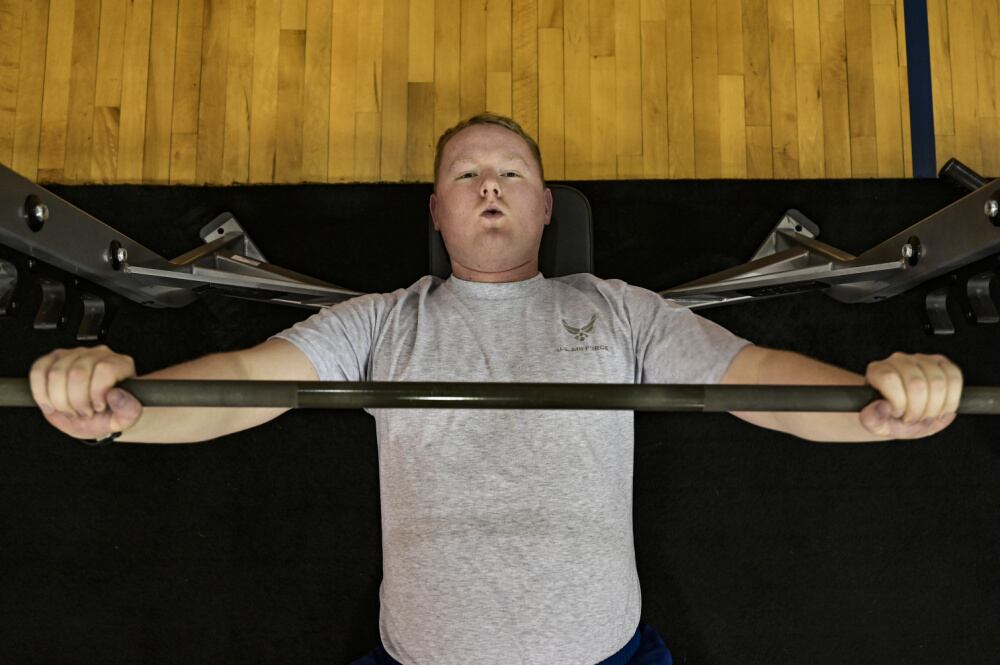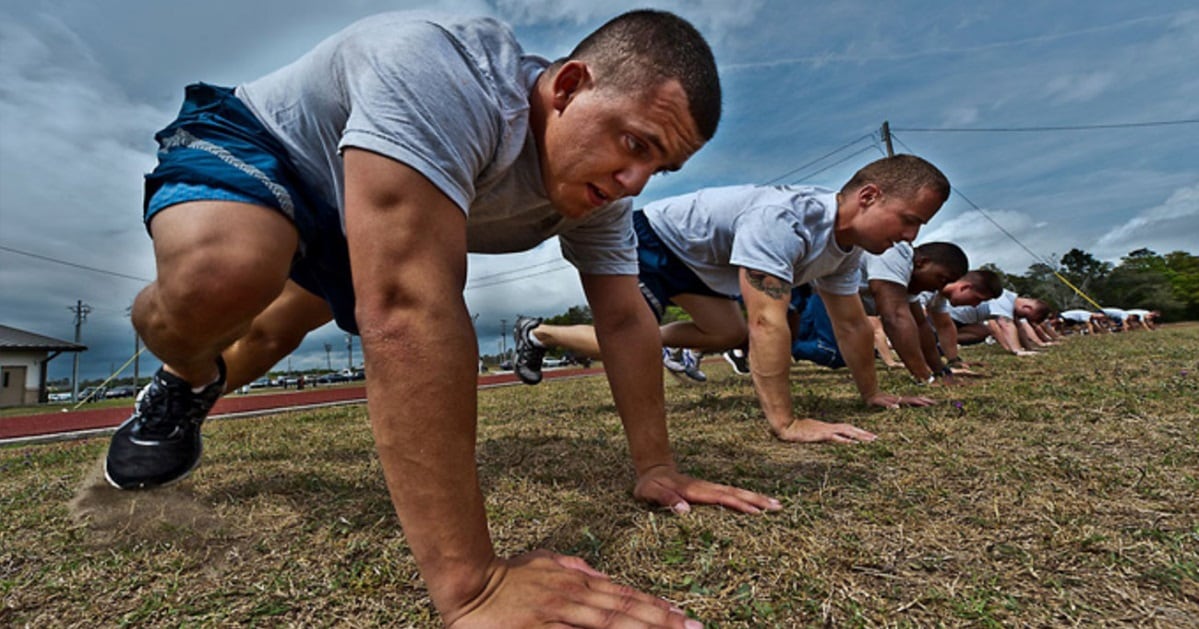The Air Force is launching a customizable physical fitness test where airmen and guardians can mix and match the exercises they prefer.
Starting early next year, the Air Force will offer a menu of options that fall into three categories: aerobic exercise, core strength and upper body strength.
In addition to the current 1.5-mile run to test cardiovascular health, troops can pick a 20-meter, back-and-forth shuttle run if they prefer sprinting instead of endurance running. The faster someone finishes the shuttle run, the better their score, Lt. Gen. Brian Kelly, deputy chief of staff for manpower, personnel and services, said during a question-and-answer session on Facebook.
Service members will also be allowed to speed-walk one mile without first getting a medical waiver. Cardio will still count for 60 percent of a person’s total physical training score.
“The ‘walk’ is not a stroll in the park and both the pace required and method for computing aerobic fitness make it 100 percent equivalent to the run,” Kelly said. “In fact, I think we’ll find fewer people will prefer that option over the more traditional mile-and-half run.”
RELATED

Pushups will remain as one option to measure upper-body strength, but airmen and guardians can now choose the “hand-release” version where a person returns to the ground between reps, Kelly said. For the abdominal portion, the Air Force will allow a reverse-crunch variation with one leg crossed over the other, as well as planks. Each category will count as 20 percent of the total score.
“Finalized fitness assessment scoring charts, with alternative components broken out by gender and age, will be provided at a later date,” the Air Force said July 2.
Officials considered other exercises, like swimming, rowing and biking, but likely won’t add those to the menu because not all bases have the facilities or equipment to accommodate them. The tests should be equitable for any airman, no matter where they are.
“When we release this and introduce the other components, we’re going to have about a six-month break-in period, so people can test them out, can see, get feedback, but they won’t be able to count those,” he said. “If we have to make any adjustments, we’ll make those adjustments.”
Body composition measurements will resume on Oct. 1, but will no longer contribute toward the fitness test score. Decoupling waist circumference or another metric from the PT score is meant to discourage unhealthy behavior like calorie restriction and purging.
“Weight will not be a part of your PT test,” Kelly added. “Body composition, your weight will impact that.”
RELATED

Chief Master Sergeant of the Air Force JoAnne Bass noted the Air Force also wants to give noncommissioned officers the ability to administer PT tests instead of asking people to go to a fitness assessment site.
The Department of the Air Force also rolled out a new centralized “myFitness” system for all airmen and guardians’ PT assessments, schedule and other paperwork. It will replace the Air Force Fitness Management Site II, the service said.
“myFitness will eventually allow users to schedule fitness assessments, receive automated notifications for scheduled testing or cancelations, access and submit fitness assessments, upload medical documents for review,” the Air Force said.
Pushing back on criticism that the changes are watering down high military standards with a laissez-faire attitude, Bass said the Air Force must strike a balance between what bolsters readiness and what works best for members.
“We ought to be mindful when we’re characterizing changes that we’re making,” she said. “What are the standards that are non-negotiable, but what are some things we need to evaluate as we become that Air Force of 2030?”
Regular PT tests resumed July 1 after multiple delays due to the coronavirus pandemic. The Space Force will continue following Air Force fitness requirements until it comes up with its own PT policies.
Rachel Cohen is the editor of Air Force Times. She joined the publication as its senior reporter in March 2021. Her work has appeared in the Washington Post, the Frederick News-Post (Md.), Air and Space Forces Magazine, Inside Defense, Inside Health Policy and elsewhere.





